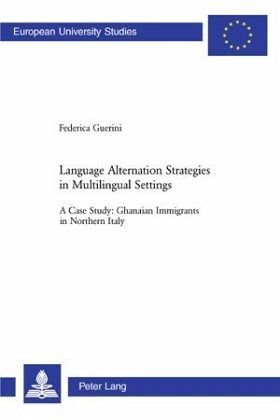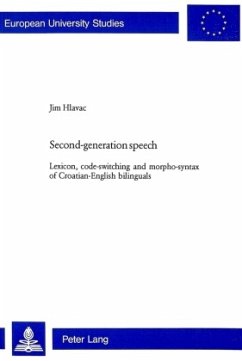
Language Alternation Strategies in Multilingual Settings
A Case Study: Ghanaian Immigrants in Northern Italy
Versandkostenfrei!
Versandfertig in 6-10 Tagen
88,95 €
inkl. MwSt.

PAYBACK Punkte
0 °P sammeln!
This book is one of the first systematic studies to describe the linguistic repertoire and the communicative strategies adopted by Ghanaian immigrants in Italy.The linguistic repertoire of the Ghanaian community in Bergamo (Northern Italy) is described with a special focus on the different codes composing it. The author analyzes the role that each code plays in expressing the community members' ethnic and linguistic identity, and the speakers' attitudes towards each code. She draws on the results of qualitative analysis - adopting both a macro-sociolinguistic and a micro-sociolinguistic perspe...
This book is one of the first systematic studies to describe the linguistic repertoire and the communicative strategies adopted by Ghanaian immigrants in Italy.
The linguistic repertoire of the Ghanaian community in Bergamo (Northern Italy) is described with a special focus on the different codes composing it. The author analyzes the role that each code plays in expressing the community members' ethnic and linguistic identity, and the speakers' attitudes towards each code. She draws on the results of qualitative analysis - adopting both a macro-sociolinguistic and a micro-sociolinguistic perspective - of a database of face-to-face interactions and of formal interviews involving a selected group of Ghanaian immigrants.
The linguistic repertoire of the Ghanaian community in Bergamo (Northern Italy) is described with a special focus on the different codes composing it. The author analyzes the role that each code plays in expressing the community members' ethnic and linguistic identity, and the speakers' attitudes towards each code. She draws on the results of qualitative analysis - adopting both a macro-sociolinguistic and a micro-sociolinguistic perspective - of a database of face-to-face interactions and of formal interviews involving a selected group of Ghanaian immigrants.














